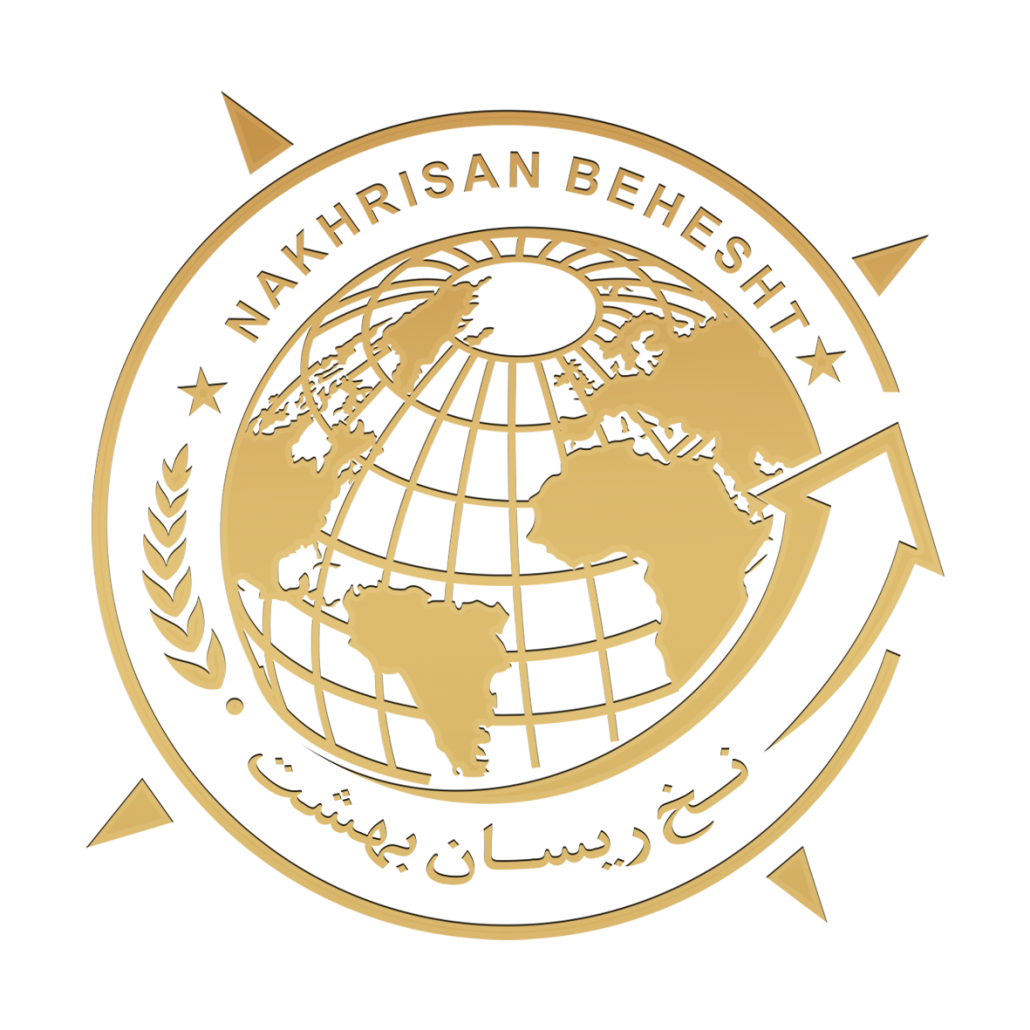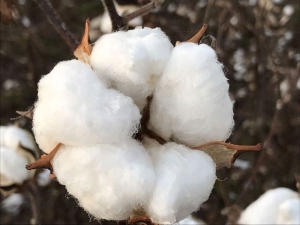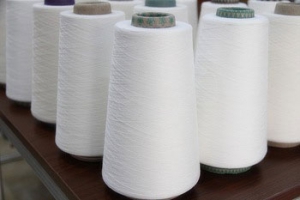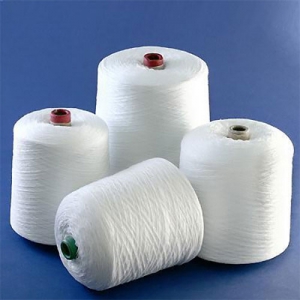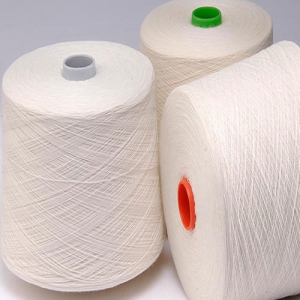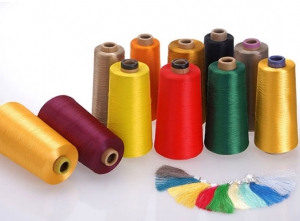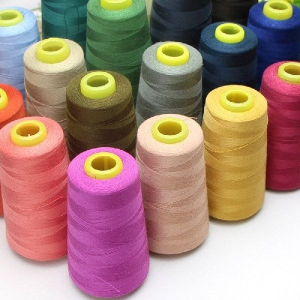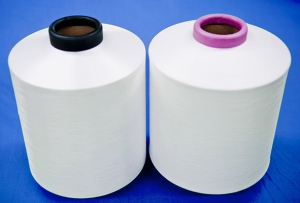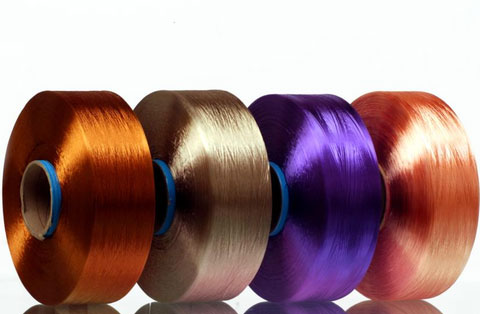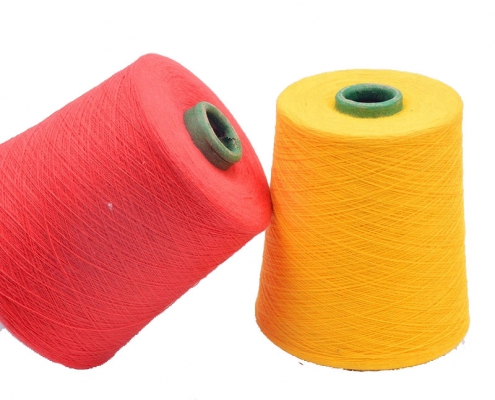COTTON
Cotton yarns are the most produced yarn of the world. Mainly cotton yarns are divided into three types as carded, combed and rotor yarn depending on the manufacturing techniques. There are various types of cotton yarns are produced by different spinning machine. Each having its own characteristics. These characteristics vary according to the construction and treatment given in the manufacture of the yarn.
Carded yarn
- The yarn is more hairy.
- The yarn is more irregular.
- The yarn is cheaper.
- The yarn is less shiny.
- Some trash may be present in the yarn.
- Neaps can be present in the yarn.
- Possibility of irregular twist distribution in the yarn.
Combed yarn
- The yarn is less hairy.
- The yarn is more regular.
- The yarn is more costly.
- The yarn is shinier.
- No trash can be present in the yarn.
- Neaps are not available in the yarn.
Compact yarn
Compact yarn is a revolution in spinning technology on that respect. Yarns produced by compact spinning have many advantages over traditional ring spun yarns. Over recent years, the system of compact spinning has constituted a rapidly developing technological trend in most countries.
Viscose
Viscose is a man-made fiber—a “regenerated cellulosic fiber” made from cellulose, most commonly wood pulp, but many plants can be used, such as bamboo. It is not a synthetic fiber made from petroleum. The cellulose is broken down, and then “regenerated” into a fiber. All viscose is made from cellulose. And only cellulose. Viscose is a fiber – not a yarn or a fabric. In making the viscose you can make it by not paying any attention to the resulting pollution OR you can make it in a “closed loop” system, which captures / neutralizes / re-uses the nasty chemicals, and treats the water so no water pollution—innovative, circular, and regenerative.
Viscose has a myriad of brilliant qualities, which makes it a popular fiber to work with. Thanks to its characteristics, several industries use it, to create a wide range of products. Some of the most beneficial characteristics of viscose include :
- Versatile – it blends very well with other fibers
- Drapes well
- Excellent color retention
- Highly absorbent
- Very smooth
- Relatively light
- Strong and robust
Polyester Fabric
Polyester is a synthetic fabric that’s usually derived from petroleum. This fabric is one of the world’s most popular textiles, and it is used in thousands of different consumer and industrial applications. When blended with cotton, polyester improves the shrinkage, durability, and wrinkling profile of this widely-produced natural fiber.
Commonly used in :
Shirts, pants, hoodies, dresses, jackets, underwear, socks, blankets, hats, sheets, rope
DTY
Drawn Textured Yarn (DTY) yarn is obtained when Polyester POY is simultaneously twisted & drawn. This process disperses, curls and entangles the filaments composing the POY yarn, which gives DTY a fluffy appearance and gives it the properties of both natural and synthetic fiber. DTY yarns are known as thread ,Heat set and bulky filament. DTY yarn is mainly used in weaving & knitting of fabrics for making clothes, home furnishings, seat covers, bags, high-end apparel, high-end sports shoes, sports bags, home furnishings and zipper tapes and many other uses. DTY yarn can be in Semi Dull or Bright or Triloble Bright depening upon the type of sections of filaments.
Intermingle thread, which is produced in three types( simple, intermingle (knotted) and comingle), is used in sofa fabric, curtain, shirt, linen, suit, worsted, carpet cover and prayers carpet, machine woven carpets pile and industrial usages. DTY is suitable for fabric end uses like outer/inner garments, skin-clinging garments, furnishings, upholstery.
FDY
Polyester FDY is the abbreviation for Polyester Fully Drawn Yarn. It is also know as Polyester Filament Yarn (PFY) or Spin Draw Yarn (SDY). It is fully drawn yarns fixed through stretching, orientation and crystallization. FDY is a type of highly drawn polyester filament yarn which can be used to produce high strength fabrics and textiles. FDY is mainly used as weft or weaves in making fabrics. This yarn is used as the first material of twisted threads and is also used directly in knitting. FDY can be knitted or woven with any other filament yarn to get fabric of various different varieties. FDY yarn is mainly available in 3 lustre – Semi-dull (SD), Bright (BR) having circular section & Triloble Bright (TBR) having triangular cross-sections. Filament yarn having trilobal bright lustre is widely used in making curtains, bed-sheets and carpets.
Commonly used in :
High-end undergarments, high-end sportswear and home furnishings.
SPUN
Spun yarns are long continuous length of interlocked fibers, suitable for use in the production of textiles, sewing, crocheting, knitting, weaving, embroidery, and rope making. Thread is a type of spun yarn intended for sewing by hand or machine. Spun yarns can be made from a number of natural or synthetic fibers . Spun yarn is made by twisting staple fibers together to make a cohesive thread. Spun yarns may contain a single type of fibre, or be a blend of various types. Combining synthetic fibers with natural fibers is very common.
Commonly used in :
Dressing gown, Scarf, T-shirt, Underwear
LYCRA
Lycra is a brand name for elastane, which is a highly elastic synthetic fabric. Despite having different names, Lycra, spandex, and elastane are all the same material, and these fabrics can stretch to 5-8 times their usual size.
Commonly used in: Underwear, socks, bike shorts, yoga pants, hiking apparel, motion capture suits
